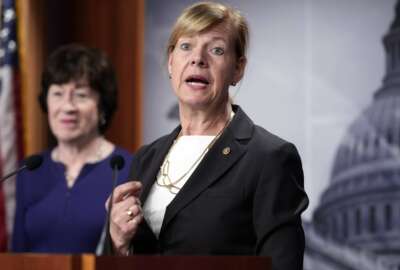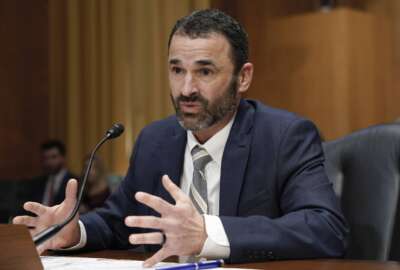Hubbard Radio Washington DC, LLC. All rights reserved. This website is not intended for users located within the European Economic Area.
On Air: Federal News Network
Trending:
Council trying to create a performance culture snowball effect
The Performance Improvement Council is following four complementary strategies to increase the use of data-driven decision making and create champions to spread...
wfedstaff | June 4, 2015 8:15 pm
The Performance Improvement Council is taking a Zen-like approach to further the culture of performance across the government.
The PIC is showing the results, teaching the practices and encouraging agencies to see the benefits of measuring performance and acting on those results.
Kate Josephs, the executive director of the Performance Improvement Council, said the council’s long-term focus is to take small pockets of improvement and watch them grow across the government, starting at the program level.
The PIC includes only six full-time federal employees so they must pick and choose where they can impact the huge government. Josephs said the performance community currently consists of about 800 people who self-identify as working on these issues, and the goal is to expand that number.
“We want to encourage that conversation both within delivery systems in an agency, but also across components. What can component X in HHS learn from what component Y in DHS is doing when it comes to performance and delivering results,” Josephs said after a panel discussion at the 15th annual Government Performance Summit sponsored by the Performance Institute and the Association of Government Accountants in Washington. “We run a lot of working groups and we are increasingly looking for working group topics that hit that. We are running a working group on law enforcement metrics, which is about helping people working in law enforcement operations to think through how best to measure performance. We have people coming from Justice components, all over the federal government in a really great way because they are talking to each other and realizing they are not alone in this challenge.”
Part of reaching out to components is building a critical mass of performance leaders among the programs and components
Josephs said if the PIC can help train champions of performance measurement, then those people can go into their agencies and spread the word through training.
“A great example of this is our performance enthusiasts and ambassadors program, which is essentially a personal learning and development program that we provide at no cost to federal staff who want to strengthen their skills in performance. We build those capabilities and then really help them become ambassadors in their own organizations,” she said. “We’ve had some great feedback from that. We’ve really been a pilot over the last year and now are moving into a second year of that program with great results.”
New GPRAM reports due soon
Josephs said these complementary strategies are two of four the PIC is focusing on in 2015 and beyond.
The Performance Improvement Council is doing most of the heavy lifting to implement the Government Performance and Results Act Modernization Act (GPRAM) passed by Congress and signed into law by President Barack Obama in January 2011.
But even four years after the bill became law, agencies are making slow progress in using data to make program performance decisions.
Chris Mihms, the managing director for strategic issues at the Government Accountability Office, said during the panel that several reports are due out later this year looking at GPRAM. He said he would withhold rating agency progress until a congressionally-mandated report comes out in September.
“I’m not sure how it’s doing,” he said. “I understand that’s probably not a good thing. On the plus side, it has clearly put in place the infrastructure that has not been there before for thinking about cross-cutting analysis of programs. It’s still a very much open question about how much we are being successful.”
Mihms said, like most things, some agencies are taking the GPRAM requirements to use the performance data to make decisions seriously, and others remain in check- the-box mode.
Robert Shea, a principal at Grant Thornton and former Office of Management and Budget official in charge of performance management during the President George W. Bush administration, said the fact that the law required the framework to be institutionalized is an important step. But he said it’s unclear whether programs are improving because of the data.
Changing the culture
Josephs said another strategy for the PIC is to help ensure the GPRAM framework is used to meet the spirit and intent of the law. She said the PIC is helping agencies to use the framework through building capabilities or take steps to add value.
“It’s hard to give you specific examples because honestly that’s about how we work every day. When somebody picks up the phone to one of my team and asks a question about hows this bit of the guidance works or how do they fill a specific part in, we try to help them understand it in a way that’s useful for them,” she said. “This has to resonate at the program level and at the component level. That is not by any means saying it’s easy. It really isn’t. The federal government is huge, and there is a lot of communicating, reinforcing and building capability that needs to happen to get us to that point. But if we can, in our small way, as a team help drive that, I guess the way we might describe it is it’s the instituting of a performance culture in an organization so it’s not seen as an add-on or a management fad, but the way you get stuff done. You use data to inform decisions. You course correct. You constantly try to improve and learn. You engage with your team and with citizens. All of those fundamental tenets of what this is all about is what we are trying to institute.”
The PIC is spreading culture by several different approaches. Josephs said every two weeks the PIC holds a one-hour speakers series with experts from state and local and federal agencies, academia and other private-sector experts.
“They talk about how they have done it within the culture of their organization and what lessons others in the performance world can take from that,” she said. “That’s had a really disproportionate impact in people feeling like they are part of a community, being enabled to learn from others in sort of a non-threatening way.”
The PIC also runs a series of training courses, including train the trainer courses so experts can bring those lessons back to their agency.
Josephs said beyond the GPRA Modernization work, the PIC is helping agencies set new goals for 2016 and 2017.
OMB released new guidance in April giving departments until May 15 to draft new or updated high-priority goals.
“We currently are co-designing a set of engagements with a very large federal agency to help them work through the development of a potential new agency priority goal,” Josephs said. “Designing a new goal isn’t straightforward. This particular goal cuts across a lot of components within that the agency and some of the institutional barriers, language barriers and really tricky measurement issues. We are co-designing with the team over there a set of meetings and engagements that really try to bring everybody in the agency that needs to be part of the conversation together and rapidly move them through the understanding to shape the choices they need to make and make some decisions in a relatively short period of time.”
RELATED STORIES:
OMB adds a twist to the two-year goal setting process
Experts optimistic about updated performance bill
Progress lacking on GPRA Modernization Act
Copyright © 2024 Federal News Network. All rights reserved. This website is not intended for users located within the European Economic Area.
Jason Miller
Jason Miller is executive editor of Federal News Network and directs news coverage on the people, policy and programs of the federal government.
Follow @jmillerWFED
IRS seeks $104B for multi-year modernization fund to maintain customer service improvements
Related Topics





